-
Content count
876 -
Joined
-
Last visited
-
Days Won
9
About 寒月 Hanyue
-
Rank
Dao Bum
Recent Profile Visitors
16,851 profile views
-
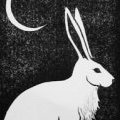
anatomical basis for meridians, is it fascia network?
寒月 Hanyue replied to snowymountains's topic in Daoist Discussion
* -
Well thats just a fucking depressing outlook! Truth is harsh sometimes. The skills, methods and knowledge are out there, but they are hard to come by.
-
I'm referring to most of what the post touches upon, rather than the more esoteric based systems mentioned at the end that use abstract methods with imagination and visualisation (ie indirect). It's just a scale, where you engage it is the entry point, how far the changes occur up and down the scale is a different thing. Since the sounds are typically viewed in relation to the organs, any method used has to touch and affect them. Some are more "direct", others are more "indirect". Hope that helps,
-
Do you have any specific questions? The relationship of emotions, qi, the organs and the body is often weirdly interepreted in qigong circles. It is currently spring, spring is "liver" qi. Liver qi does NOT mean qi from or in your liver. It refers to a form of yang qi that has a driving pushing quality to it. This is what causes a seed to sprout and literally have the capacity to push through the earth to grow into the sunlight and continue driving upwards - be it a flower, shrub, or tree. This same type of movement of qi in our system we relate to and equate with strong movements of certain kinds of emotional repsonses. This is why "liver" qi is associated with frustration/rumination/anger/rage etc. as well as heart attacks and stroke, blood pressure spiking and going upwards etc. I was always taught to notice the increase of frustration and expressed anger and irritation from people (in person and online) during Springtime. Why this association? When this driving force can express itself and play out, everything is fine it supports us doing things. If it hits something that blocks it, the "pressure" begins to ruminate, which can lead to frustration, which can lead to anger, and then to rage. Sitting on "liver" qi, is generally not a good idea. Calming the liver qi does not really have anything directly to do with the physical organ. It also does not "purge" negative emotions in the sense that you take negative emotion and vomit it out. Rather it shifts the state of your qi so that excessive driving yang qi is not present. Now, it can be understood for example, that without good "kidney" qi, the jing is not anchoring the qi, and the qi even if calm is more prone to be able to rise and or to do so suddenly ("liver" qi). This is where the relationships between the organs and qi comes in. Notice how breathing methods associated with the kidneys is typically aimed at encouraging the rear of the diaphragm to descend and the lower back (mingmen) to expand slightly (the "kidneys grab the descending qi"). If the whole diaphragm does not expand as you breathe, and the rear is stuck guess what? It means that when you inhale there will be a tendency to expand and rise in the front, possibly even to lift the sternum. The sternum raising also occurs in sympathetic arousal ie stress/anxiety breathing. The liver sound is typically done with a LOOONNNGG and slow exhale - this is because doing so calms the nerves and body and the qi. The "sounds" are not magical they simply encourage you to begin to engage the body in different ways as you inhale and exhale. They also relate to patterns of movement of qi. We can add a whole body movement that aligns with and encourages this, as well as an aspect that can be seen to physically "massage" or encourage stimulation/movement of the physical organ as well. Then there is the use of vibration. Different systems and approaches remain more superficial or go deeper into the different layers of practice, or combine they slightly differently. Some focus almost entirely on the sound, arguably to their detriment. The more esoteric systems that add colours, light, animals etc are operating on a different level and you really have to choose one or the other, because trying to span that range within your Being is simply beyond most people in the beginning. They can't be in two rooms at the same time. My preference is for people to learn the more direct methods first, and then if appropriate and of interest to later explore such esoteric methods. Othwerise they can simply become imagination and fantasy.
-

I would like opinions on a local baguazhang instructor
寒月 Hanyue replied to EFreethought's topic in Daoist Discussion
I wouldn't bother with this teacher. Various red flags, it's expensive and something gives me the impression they might not teach very openly. Generally I agree with Gerard regarding Bagua, but not this time. Sorry mate... Nothing wrong with the demos posted, but... Not all schools of Bagua start turning/walking the circle the same way, or with the same emphasis or type of stepping. The above implies that anyone not stepping the way demonstrated is wrong, or at least not worth your time. That implication I disagree with. Having learned both Cheng and Yin style approaches, and explored Ma Gui, I know which I personally got on with and found the most benefit from. It's not better or worse, or correct and incorrect. It is simply where a teacher (system) starts you off. Over time, I've become less a fan of some of the Cheng (there are variations) and Liang style approaches to the circle, but thats me. Does the teacher have skill? Do any of their students? Do you like/enjoy the atmosphere of being around them? These are the questions. Finding all three and count yourself lucky! You can learn a lot from people even if you don't like them. It's just harder, and not as pleasant. You can also learn from someone with skill, even if others have not (maybe they aren't good students). Again it's harder, but at least the teacher has skill that lets you have a sense of the actual art. But can you grasp it!? If the teacher doesn't have skill, there's no point. How do you know if the teacher has skill when starting out? Thats the paradox one of my old teachers would laugh about. New students (typically) simply don't know enough to discern either way. Such knowledge is sometimes learned the hard way. -
I agree with Apech. Most debating this, appear to forget or overlook context. Teachers advising X is preferred over Y are doing so based on the context of a given cultivation method. If you are not practicing that method, then their advise about the use of posture becomes either less or entirely irrelevant. The main thing when learnign a tradition or specific method from a teacher, is follow their advice and trust that it suits and supports the practice of THAT method. There will always be others doing other things while practicing other methods. Criticism of sitting in a chair, is like a football (soccer) player complaining a basketball player used his hands. That said, there are a variety of reasons to learn to sit in full lotus, as well as a variety of approaches of doing so. Some advise it because of the physical stability the posture brings from a culture that sat on the floor. This physical stability enables a deeper practice developing stability of mind and other states. Some advise it as a method to shut off the leg channels, this enables an easier and quicker concentration of energy at the base of the torso, as well as building energetic pressure to stimulate energy centers and channels. Some say that in "proper" full lotus the leg channels are not shut off and the channels are fully open and flowing. This last view, does not in fact undermine the use of the posture to shut off the channels. They are simply different usages, of the same posture at different stages by different levels of practitioner. Things are not so black and white; posture X = 'one thing only' I've had teachers advocate it, or working towards it. While others have felt it was a "show off" posture for the flexible. It is certanly true that the vast majority of those I have met that can comfortably adopt the full lotus posture have no eneregtic or spiritual development whatsoever. Best,
-
Thanks for sharing That was great! Lovely to watch, such clear shenfa.
- 18 replies
-
- 1
-

-
- liu he ba fa
- form
-
(and 1 more)
Tagged with:
-

Bruce Kumar Frantzis new book: Heaven and Earth Qigong
寒月 Hanyue replied to TomBrad's topic in Daoist Discussion
This is correct. It has Bruce's name on it as a stamp of approval, but it is Paul's book, following Pauls way of explaining things. All the senior students have their own ways of leading people through the neigong, as does Bruce. I like the original H&E Dvd as well. Though there are some issues with it. In the same way that Bruce goes into the advanced version rather than the usual foundational version of cloud hands on the Energy Gates Dvd. In the H&E Dvd he doesn't explain/teach the initial circulation for the large cycle, he goes straight into a more advanced version. I still think it gives a great introduction, and overview for layers of the practice that many will get a lot from. All in a relatively inexpensive package. Best, -

Is it true that focusing on developing your middle dantian (heart), also develops and refines the upper and lower dantians too?
寒月 Hanyue replied to Ryan94's topic in Daoist Discussion
Not all Daoist lines place or associate the zhongdantian (central/middle dantian) with the heart, or the heart as being a dantian. Some do, some don't. This can annoy people that want everything to line up and fit neat boxes, but there you go. And no it doesn't mean one tradition is "correct" and others "false", and which is which.... Over the years I've been exposed to several dantian models, all of which follow the internal logic of the tradition that used them. Similar to 'chakra' models (of which there are plenty) used in different yogic and Buddhist traditions. -

Stillness Movement Neigong and Michael Lomax's 'Light Warrior's Guide' Book
寒月 Hanyue replied to mjjbecker's topic in General Discussion
That is because it was set up to organise hosting workshops 8 years ago! There are no plans for us to host Michael in Europe. If you wish to know whether or not he has any intention to travel to Europe, e-mail him and ask directly, his e-mail is on his website http://www.qigongamerica.com/ You could even look into organising and hosting him yourself. -
You're welcome. No. Wouldn't that be a miserable life! While it is common to translate 慾 as "desire" and if you look in a modern dictionary it will also say "passion", this can lead to some interesting interpretations of what Laozi is trying to point out. That you must live a "passionless" life? Not only is this counter to the received pragmatic teachings, but also if we turn our hats to a scholastic view. 慾 etymologically carries the meaning of 'to want, to request, to ask, expectation, longing' the meaning of which is usually summed up as I mentioned, in the translation of "desire". One way that makes pragmatic sense of this, is the view that Laozi was pointing out that when we want things to be something they are not, this leads us away from the Dao and into mental or emotional states that separate us from it (be they viewed or experienced as "positive" or "negative" states). You can however fully accept what is, and experience positive emotional states. Denial of emotional states is in fact counter to the teaching of accepting things as they are and naturally arise. That, or you can choose a dour life. Yes it is true that many renunciates aim to reduce the impact of the world upon themselves to aid their training. Hence the term renunciate. But that is only way approach to get somewhere, and even that does not always lead people to where they are trying to get to. So don't mistake the approach for the destination. Laozi explains an approach in a kind of tongue twisting, brain frying play on words in verse 71 (though different editions of the text read slightly differently); Know not-knowing: supreme. Not know knowing: faulty Only faulting faults is faultless. The Sage is faultless By faulting faults, And so is without fault. - Addiss & Lombardo If you can wrap your head around that, you'll see that avoiding things is irrelevant. It was and is only ever a temporary stop-gap, which may or may not be helpful for any given individual. Don't forget the Chinese saying "The small hermit lives on a mountain, the great hermit lives in town."
-
There are two paths that you can get an answer from. One is irrelevant for most people. The other can be understood in several ways. For some it will lead to an esoteric study usually involving tables of correspondences and associations, as well as practices or methods that engage those correspondences and associations in order to align with the qualities viewed as relevant to winter (or the given season). Without knocking the above, as I mentioned it is not the only understanding. Another is more directly connected to the natural realm. This is about following the qi of the seasons, it's not the weather, that is only one part. The qi of the season has a terrestrial and celestial aspect, but as I've said it isn't about going into complicated calculations and potentially dogmatic tables of correspondences. Instead it is rooted in observation of nature, flora and fauna. Winter is often touted as relating to our kidney system, which is true but easily misunderstood. It isn't really talking about the kidney organs, although they are an aspect of it. The Neijing provides suggestions that are based on not taxing the kidney system, physically, or mentally-emotionally. So, whatever you have in your life that uses the kidney system, you want to learn to back off from that (plausible), or even completely stop it (not so easy in todays society). The actual practices therefore should be the ones that emphasis or allow that, or that aspect of your practice becomes emphasised (not entirely the same thing). While nature is going deeply yin heading into the peak of winter, it does not mean there is no yang. Reducing activity does not always mean no activity, or even less activity, it refers more to how you approach and do activity. You still want to encourage some circulation to maintain health and fend off the cold. The cold is viewed as driving things deep into the body, which is why the surface and extremities can become cold. We are advised that we want our qi to go deeply inwards, to store and nourish during winter. So why not let the cold do this for us? They are not the same. In our practice we want to maintain some yang, this enables and allows the yin aspect of our practice to be better, deeper or more full. Losing the yang can lead to what is called 死坐 "dead sitting", a concept found in Daoism and Chan Buddhism. Another aspect is changing with the yin-yang changes of light (daytime) and dark (nighttime), maximising the time we have available light, and getting suitable rest. Another would be eating sensibly in accordance with seasonally available foods, as well as cutting back on yin foods (cold/cooling food etc), while emphasising yang foods (hot/warming foods etc), this includes what we drink and any teas we consume (which change seasonally). So our food, practice, habits and activities fall in line with the nature and qi of winter, more than they do not. The caveat is that each person is unique, and given possible present pathologies what is best for an indiviual is always a balance between medical and seasonal considerations. Just because you read somewhere "do X in ______ season", it does not mean it is appropriate for you. Learn to know yourself... and find those that can help you do so in the meantime.
-
Apologies but this feels like a mis-understanding of Laozi. 五色使人目盲 the five colours make our eyes blind 五音使人耳聾 the five tones make our ears deaf 五味使人口爽 the five flavours make our mouths numb To beleive that there is only one singular 'true' meaning in these classics is a mistake. Bearing that in mind. Here the number five is being used to represent the manifesation in the world around us, it could read "all colour(s), all sound(s), all flavour(s)...". It is not saying "music uses the five tones, the five tones make us deaf, therefore do not listen to music". Just as it does not mean "blind", "deaf", "numb" in the literal sense of physically being incapable of seeing, hearing etc. It means that we are blind to the Dao, deaf to the Dao etc. Even if you avoid music, you are still hearing the "five tones" Laozi is referring to. Rather it is pointing to what occurs when we lose ourselves in the manifestation of the world. Buddhists would call that maya (illusion). Laozi remember is trying to point you to the Dao, which is 'constant', rather than the world of form, which is always changing. If you are not blind to the Dao, deaf to the deaf, numb to the Dao, you can watch, or listen or eat and it will not make you "blind", "deaf", "numb". These passages are not in isolation; 視之不見, we look but don't see it 名曰夷; and call it indistinct 聽之不聞, we listen but don't hear it 名曰希; and call it faint 搏之不得, we reach but don't grasp it 名曰微。 and call it ethereal Which is a continuation of the previous ideas. This is not philosophy or life advice, it is a direct pragmatic experience of consciousness.
- 59 replies
-
- 14
-

-
I remember this thread haha Doc's logic and reasoning is not always straight forward, there are often intentional puzzles, and mis-direction. He liked to keep people on their toes, as well as see who was truly paying attention and doing their homework. Just to be clear, many of the basic/foundational kamae in Bujinkan taijutsu can be found in all sorts of arts or activities the world over. It doesn't mean they are related! Unless of course hiraichimonji really is the secret kamae of football goal keepers around the globe!? While there are some very rare and bizarre gongfu styles, if you think a little more laterally, you might get more traction understanding where Doc was coming from (even if it wasn't specifically), you still might learn more than banging your head against the wall, and turn up something worthwhile and of interest, which is what he wanted anyway.
- 15 replies
-
- Glenn Morris
- Bujinkan
-
(and 3 more)
Tagged with:
-
And people want to skip beginners content and go straight to the super advanced stages?? The "beginner" stage of any mehtod is always the more important and relevant. I said.. Personally I feel training in person with a teacher of a method is always far better than trying to learn from resources alone. If you have access to a teacher resources can help with the learning process, even if they are not exactly the same in content. I don't know many who would listen to a book over an actual teacher, but well.. Lastly, there are various resources purporting to teach this method, there are differences between them, and some are far more reliable than others. Several are also ridiculously expensive, especially for what you get. So regardless of anything else, I still feel that book is the most accessible (cost and readability) point of entry into the method for anyone without a teacher. It is not a bad book, in a sea of crappy qigong books. If someone enjoys and likes the method, then they can investigate further, either in finding a teacher or forking out more money for an expensive course to (hopefully) take them further. It isn't rocket science, it's common sense.

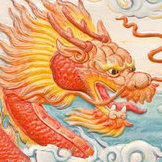

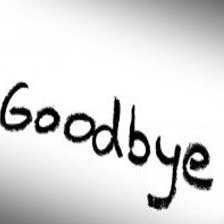
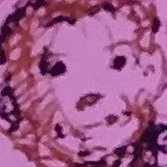
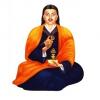
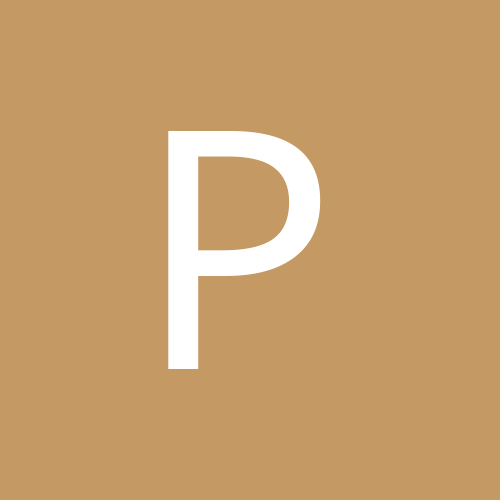


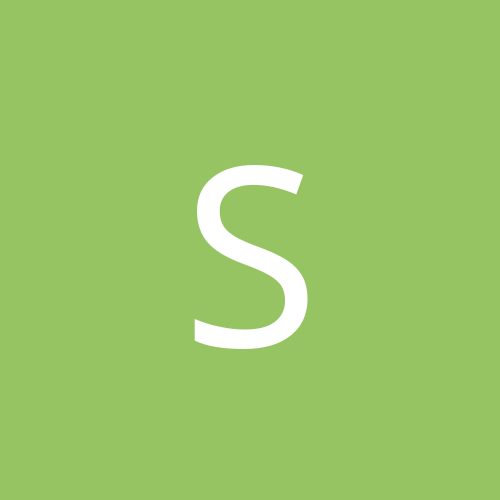

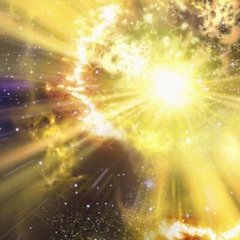

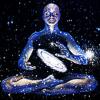


.thumb.jpeg.611f83584012f7d113169af2a4fd9318.jpeg)


